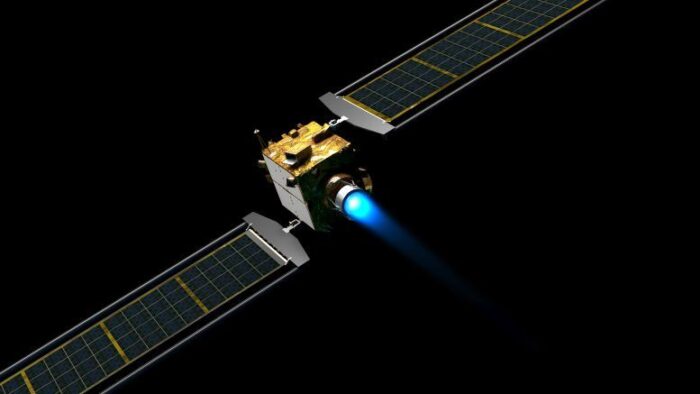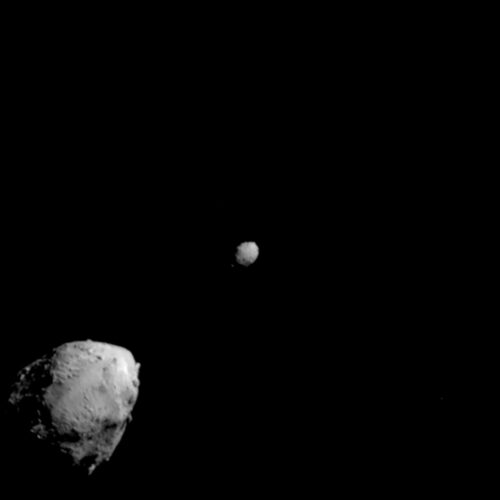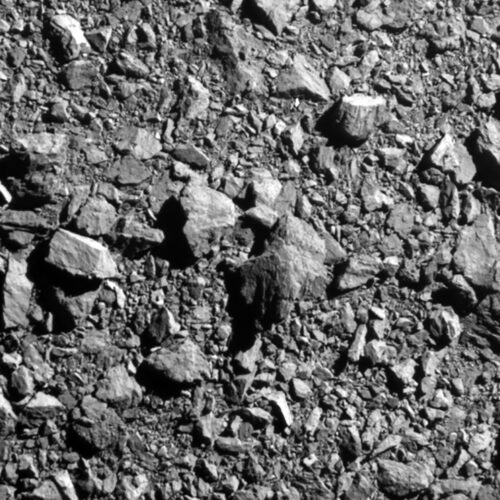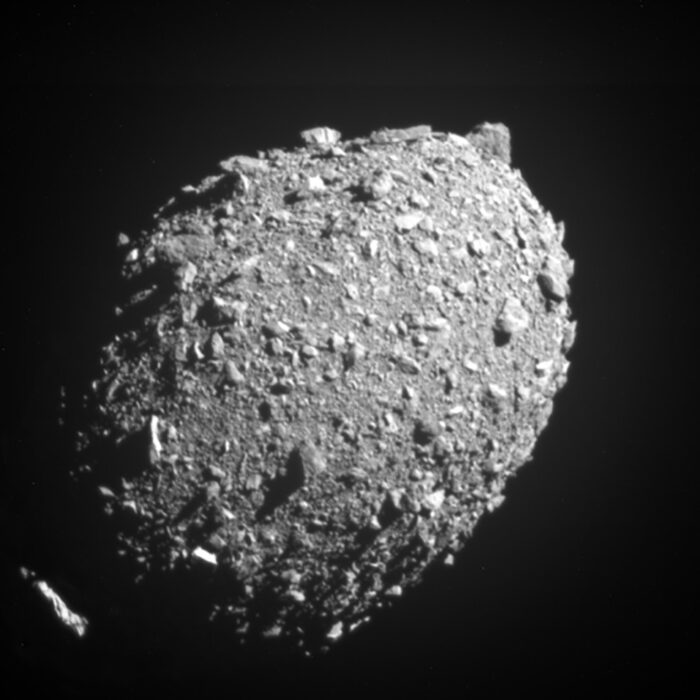This past Monday, NASA crashed a spacecraft.
Oh no! That’s terrible!
Except, hold on. They meant to do it.
Haha, sure they did! That’s what they all say!
No, really. They actually, truly meant to do it. That was the whole point of the mission.
Really? Okay, how does that work?
We’re so glad that you asked!
The mission in question was called DART. That stands for Double Asteroid Redirection Test. And if you connect the dots, you might be able to understand why crashing a spacecraft made the folks at NASA so thrilled!
Asteroids go away!

An artist's concept of the DART spacecraft in flight. (NASA)
Space is pretty empty. That’s sort of its thing. But it does have more than its share of space rocks known as asteroids. In between Mars and Jupiter, there are thousands of them orbiting the Sun in an area called the Asteroid Belt.
Asteroids generally keep to themselves, but if one was to collide with Earth, it could potentially be a disaster. (Just ask the dinosaurs…)
Scientists stress that there is no known asteroid on course to impact Earth. But if one was found to be approaching the planet, what could we do? There have been all sorts of theories, including shooting them with lasers or blowing them up with missiles. But a new theory, known as the project DART, had a different idea.
What if we just gave it a nudge so that it flew right by us?
Nudge, nudge

This was DART’s view as it approached its target, the smaller asteroid on the right is Dimorphos. The larger asteroid is Didymos, which Dimorphos orbits. (NASA)
Now when they say ‘nudge’, we’re actually talking about quite an accelerated impact.
DART was traveling at an incredible 22,530 km/h (14,000 mph) at the time of impact—that is a good 225 times the highway speed limit. Zoom!
So even though it was only about the size of a washing machine, this 570 kg (1260 lbs.) craft was primed to give an asteroid a mighty wallop.
The asteroid that it hit is called Dimorphos. It is a 160-metre (530-foot) wide moonlet of a larger asteroid called Didymos, which is orbits. The whole idea was, could DART:
- 1. Successfully hit Dimorphos squarely and firmly?
- 2. Change its path?
Did DART work?

And smash! This is the very last image of Dimorphos transmitted by DART. What a cool looking space rock! (NASA)
The answer to Question 1 was a resounding YES. At exactly 7:14 pm EST on Monday, it smacked firmly into Dimorphos.
The sensational moment was live-streamed by NASA. If you missed it, here is some video! This shows the entire live feed, but to watch just the impact, move to 1:15:00 and you’ll see the final minute.
As for the answer to Question 2, well, that will take some time. For the next several weeks, NASA and other space agencies will be observing Dimorphos and Didymos to see how effective the impact was at redirecting the asteroid.
It seems likely that such an impact would’ve had some kind of effect on the asteroid. But how much? Would it be enough to make it change course?
For now, whether DART was a total success or a mission that needs some improvement, we’re safe from asteroids down here. But the skill and engineering that it takes to hit such a small target that is in motion and 11 million km (7 million miles) from Earth is super impressive.
Way to go, NASA!
 The view from the DART spacecraft as it closed in on its target, an asteroid called Dimorphos. (NASA)
The view from the DART spacecraft as it closed in on its target, an asteroid called Dimorphos. (NASA)









